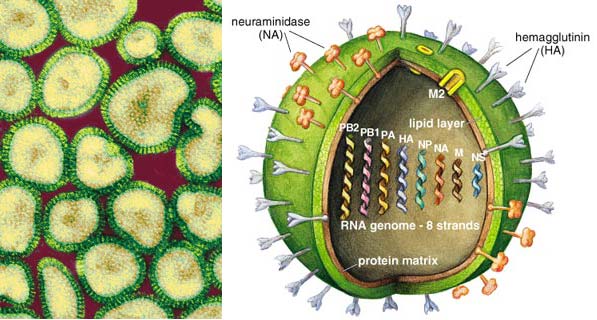|
Figure 2. Type A influenza viruses—which are responsible for human pandemics—are spheroidal particles (left), about a tenth of a micrometer across. The virus is characterized by a relatively simple structure (right):
an internal nucleocapsid, containing the viral genome, and a surrounding
envelope consisting of an inner matrix protein, a lipid bilayer and external
surface proteins. The genome consists of eight single-stranded RNA segments
that code for 10 proteins: PB2, PB1, PA, HA (hemagglutinin), NP (nucleoprotein),
NA (neuraminidase), M1 (matrix protein), M2 (ion-channel protein), and two
nonstructural proteins, NS1 and NS2. Subtypes of the type A virus are classified
according to structural variants for the two surface proteins: hemagglutinin
(15 variants—H1 to H15) and neuraminidase (9 variants—N1 to N9). An ion-channel
protein (M2), embedded in the lipid bilayer, is a target for the antiviral
drugs amantadine and rimantadine, which inhibit the protein’s function.
|
